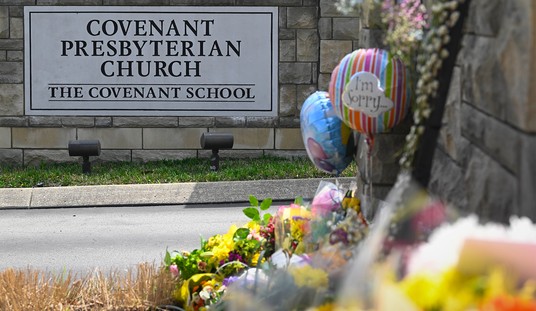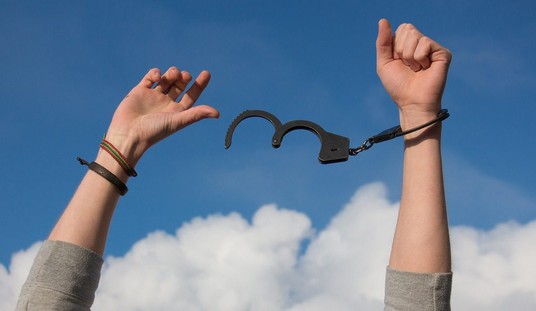
It has happened again, this time in Cleveland: a tween playing with an airsoft gun in a park becomes the subject of a craven citizen’s 911 call to police. Officers arrived, and when the 12-year-old failed to respond to police commands precisely as they wanted, as fast as they wanted, he was shot and killed.
A 12-year-old boy shot by police after grabbing what turned out to be a replica gun died from his wounds on Sunday, one day after officers responded to a 911 call about someone waving what the caller described as a “probably fake” gun at a playground.
Deputy Chief Ed Tomba said one officer fired twice after the boy pulled the fake weapon — which was lacking the orange safety indicator usually found on the muzzle — from his waistband but had not pointed it at police. The boy did not make any verbal threats, but grabbed the replica handgun after being told to raise his hands, Deputy Chief Tomba said.
“That’s when the officer fired,” he said.
The Cuyahoga County medical examiner identified the boy as Tamir Rice.
There are a number of things worth talking about with this tragic shooting. Let’s first list them, then unpack them.
- Why did the 911 caller, who said twice on the recorded call that he thought the gun was fake, feel compelled to call 911 for a toy gun? Doesn’t this amount to SWATting a child?
- Did the dispatcher relay to responding officers that the caller believed the gun to be a fake? Would it have changed how officers responded if they thought they were dealing with a toy?
- Should officers have been able to tell the gun was a toy by looking at it?
- Did the officers responding to the call give Rice time to drop the weapon?
- Were officers trained to understand that juvenile brains do not process information the same as adult brains, and that juveniles may process commands differently, leading them to do what they think officers want, and not what officers say?
- Will passing more laws solve the problems?
- Who is really to blame? Is anyone to blame?
From all early media accounts that we can find, Tamir Rice was a good kid, from a stable home out playing with his friends in the park.
SWATted
An older white man (by his voice) called 911 to report that Rice was pointing a “probably fake” gun while playing with friends, and was “scaring the sh*t out of people.”
His definition of “people” probably meant just himself, as no one else made a similar 911 call.
What kind of person calls the police for a toy gun that he even believes to be a toy gun, merely because toy guns make him uncomfortable?
This may not have been an intentional SWATting call where the caller was hoping to get the young man hurt or killed. It was clearly an incident where a person who doesn’t like even toy guns felt compelled to call police on an emergency line to report a child playing with a toy.
The results are the same. Tamir Rice was effectively SWATted to death by a man we can reasonably suspect is a supporter of gun control.
[article continues on next page]
Did the dispatcher relay the information that the gun was “probably fake?”
As a practical matter, whether or nor the caller told the dispatcher, and the dispatcher told the responding officers that the gun was “probably fake” is a red herring.
Responding officers are required to treat all weapons as if they are real.
Many weapons have been recovered from criminals that colored real guns to look like toy guns or even waterguns to give them the edge over police, and many people are coating their firearms these days in a wide range of colors to personalize them.
Put simply, officers cannot assume that a gun is fake under any circumstances until they can personally inspect it and verify that it is fake.
Hyper-realistic
Airsoft firearms are so incredibly realistic these days that it is sometimes difficult to tell whether some are real or fake even when holding them if you don’t check the actions to see that they run on springs, gas, or electricity, instead of gunpowder.
In this instance, the Airsoft gun was quite realistic in its styling, which closely mimics that of a classic 1911, other than the addition of an extraneous slide-mounted safety. The orange plastic tip had been broken off. Even from straight ahead, the barrel had been reamed out to make it look like a real firearm, though officers never saw the muzzle.

Did the officers give Rice a reasonable amount of time to drop the toy gun?
This is a loaded question (pardon the pun) that is nearly impossible to answer if we weren’t in the exact same position as the officers, in the exact same circumstances, with the exact same mindset. While there is apparently surveillance video camera footage of the shooting, it sounds as if it is primarily going to be useful in establishing a timeline, and may also verify the officer’s story that Rice drew the toy gun from his pants. If he drew a weapon, real or fake, officers had milliseconds to determine their course of action, which will (and should) err on the side of self-preservation.
The mind of a child
At the same time officers must worry about protecting their lives and the lives of others in the park at the time of the shooting, I have to wonder if they shouldn’t take into account the age of the suspect and hesitate for just an extra half-second.
As parents, we see examples every day of the juvenile mind, and how it processes information differently than an adult brain. Even when children want to do what you ask of them they often do something unexpected, because there is a very real difference in how juvenile and adult brains work and process information.
You can tell children what you want them to do explicitly, and they may still process it in such a way that they do what they think you asked them to do, instead of what you actually asked them to do. Just this week I asked my younger daughter to set the table, and she somehow processed that into “feed the dogs,” which is another chore we ask her to perform around the house just before dinner time. She was trying to do what I wanted her to do, but was instead anticipating and responding to previous conditioning and expectations.
In all likelihood, Tamir Rice saw the officers, and regardless of what they said, he processed their commands as “drop the gun.” He then reached into his pants, pulled out the toy, and was likely shot for attempting to comply with what he thought the officers wanted him to do.
This also ties back into the previous question of whether officers gave Rice time to drop the toy weapon he drew from his pants.
Keep in mind that the decision times for the officers in these situations are measured in tenths of seconds, and they have to sometimes make impossible decisions.
Tamir Rice was likely just wanting to comply. Another juvenile in the exact same set of circumstances, perhaps in a gang and holding a real weapon, might have decided to draw and fire at the cop.
There is no way for the officers to know which boy they are encountering, and waiting to feel the bullet strike your flesh is not a viable police response in all but the rarest of circumstances.
Will passing more laws solve the problem?
State Representative Alicia Reece of Cincinnati, president of the Ohio Legislative Black Caucus, wants to pass a law that would “require all BB guns, air rifles and airsoft guns sold in Ohio to be brightly coloured or have prominent fluorescent strips.”
As noted previously, this proposed legislation demanding toy guns have a certain colortion is utterly pointless.
Real guns can be (and are) painted in hundreds of different colors, including florescent colors such as Zombie Green or Prison Pink.
Rep. Reece fails to grasp is that the external color had nothing at all to do with whether or not the gun under the paint is real or a toy.
This is a classic case of when you have a hammer (legislator), the solution to every problem looks like a nail (or a law) that needs to be pounded down.
But this can’t be solved with laws.
So what is there to do? What is the answer to the problem?
I wish I knew an answer that would satisfy everyone, but I don’t have such an answer.
In instances like this, or the shooting of Andy Lopez, who was killed by an extremely well trained veteran officer while was carrying a realistic-looking AKM, the deciding factor that might have changed the outcome might have been a bit of time and distance for observation, a luxury they don’t typically have.
If officers had observed the boys in either instance from a distance for even a minute, they’d likely have had clues as to whether or not they were dealing with a real weapon. For example, no child on that playground is going to stay around playing with Tamir Rice if they thought he was waving a real gun. The actions of others in the area should have been a “tell” to the officers if they had taken the time to look at the larger picture, instead of so narrowly focusing on the potential threat and diving into the situation without bothering to discover if there even was a problem first.
But it isn’t their fault. We’ve stripped them of the option of waiting and observing.
As a culture, we’ve demanded that law enforcement officers adopt a “damn the torpedoes, full speed ahead” response to the potential of armed threats. We rake their agencies over the coals when they don’t engage potential threats fast enough. If the officers had waited 30 seconds or a minute to observe a juvenile and during that time the child opened fire with a real weapon, we’d want the officer’s crucified for waiting.
When they didn’t wait, and officers went right in, incidents like the deaths of Tamir Rice and Andy Lopez happen.
They can’t win.
We’re demanding perfection at all times from police, and it is impossible for them to be perfect at their jobs, just as it is impossible for us to be perfect as our jobs.
Perhaps answers begin at home
I will tell you that I don’t allow my children to have airsoft guns. It is my opinion that the risk they create in the hands of juveniles far outweighs their entertainment value.
I have used realistic airsoft pistol in scenario-based training. If I eventually purchase airsoft guns for training, they will be locked up in my gun safe, and they will be treated as firearms at all times.
Ultimately, parents are responsible for their children’s actions, and parents need to be aware of the fact that airsoft “toys” are often incredibly realistic and easy to mistake for real firearms, potentially placing their children in the same danger as brandishing a real firearm.
What say you?







Join the conversation as a VIP Member